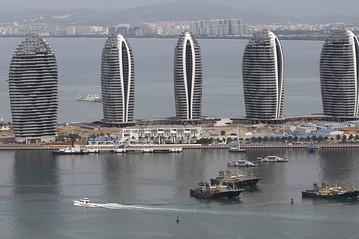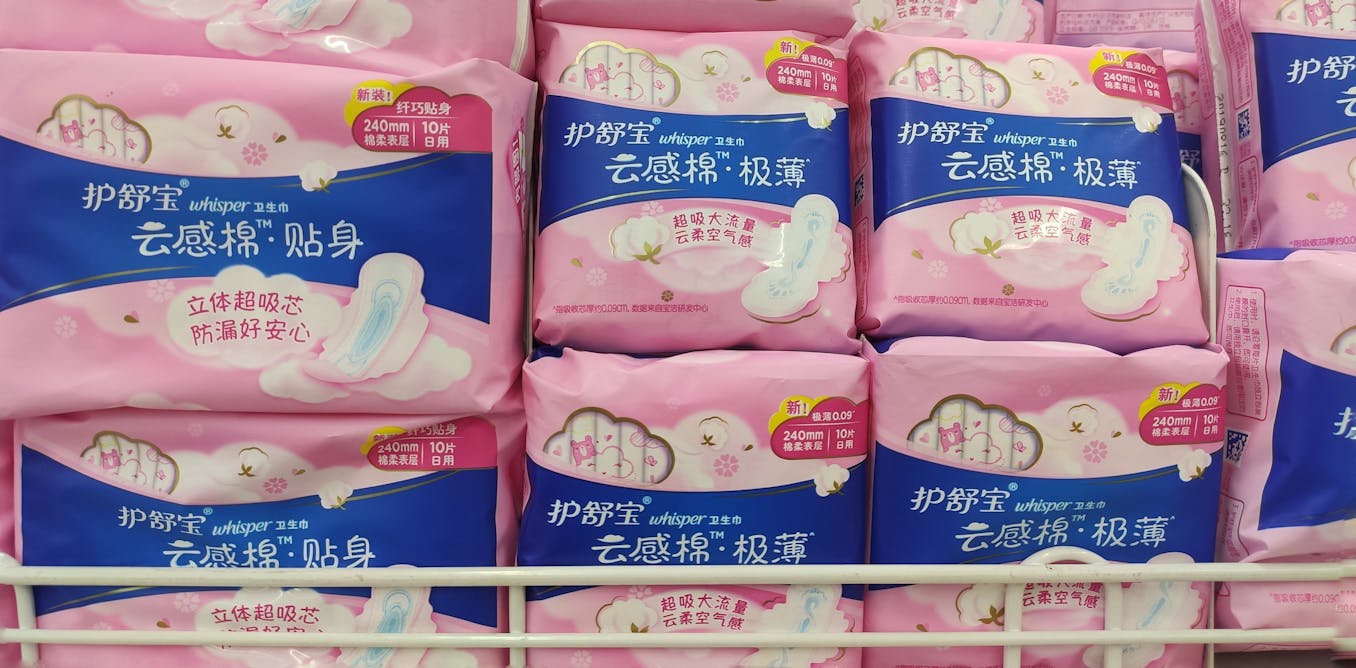China
Lardy: Don’t Underestimate Danger of Property Crash
Market analysts in China are greatly underestimating the chance that the property market could fall so sharply that it could tank China’s economy, said China scholar Nicholas Lardy. European Pressphoto Agency A view of property development on the manmade Phoenix Island in Sanya, Hainan Province, March 20 2012.

Market analysts in China are greatly underestimating the chance that the property market could fall so sharply that it could tank China’s economy, said China scholar Nicholas Lardy. European Pressphoto Agency A view of property development on the manmade Phoenix Island in Sanya, Hainan Province, March 20 2012.
Measured on a purchasing power parity (PPP) basis that adjusts for price differences, China in 2009 stood as the second-largest economy in the world after the US, although in per capita terms the country is still lower middle-income.
China continues to lose arable land because of erosion and economic development.
The country’s per capita income was at $6,567 (IMF, 98th) in 2009.
Nevertheless, key bottlenecks continue to constrain growth.
The two most important sectors of the economy have traditionally been agriculture and industry, which together employ more than 70 percent of the labor force and produce more than 60 percent of GDP.
A report by UBS in 2009 concluded that China has experienced total factor productivity growth of 4 per cent per year since 1990, one of the fastest improvements in world economic history.
Over the years, large subsidies were built into the price structure, and these subsidies grew substantially in the late 1970s and 1980s.
Both forums will start on Tuesday.
“The growth rate (for ODI) in the next few years will be much higher than previous years,” Shen said, without elaborating.
China is expected to have 200 million cars on the road by 2020, increasing pressure on energy security and the environment, government officials said yesterday.
In large part as a result of economic liberalization policies, the GDP quadrupled between 1978 and 1998, and foreign investment soared during the 1990s.
Despite initial gains in farmers’ incomes in the early 1980s, taxes and fees have increasingly made farming an unprofitable occupation, and because the state owns all land farmers have at times been easily evicted when croplands are sought by developers.
China is the world’s largest producer of rice and wheat and a major producer of sweet potatoes, sorghum, millet, barley, peanuts, corn, soybeans, and potatoes.
Hogs and poultry are widely raised in China, furnishing important export staples, such as hog bristles and egg products.
China is one of the world’s major mineral-producing countries.
China is among the world’s four top producers of antimony, magnesium, tin, tungsten, and zinc, and ranks second (after the United States) in the production of salt, sixth in gold, and eighth in lead ore.
Major industrial products are textiles, chemicals, fertilizers, machinery (especially for agriculture), processed foods, iron and steel, building materials, plastics, toys, and electronics.
Although a British crown colony until its return to Chinese control in 1997, Hong Kong has long been a major maritime outlet of S China.
Rivers and canals (notably the Grand Canal, which connects the Huang He and the Chang rivers) remain important transportation arteries.
Read more:
Lardy: Don’t Underestimate Danger of Property Crash
Business
China Dismantles Prominent Uyghur Business Landmark in Xinjiang – Shia Waves

The Chinese government demolished the Rebiya Kadeer Trade Center in Xinjiang, affecting Uyghur culture and commerce, prompting criticism from activists amid concerns over cultural erasure and human rights violations.
Demolition of a Cultural Landmark
The Chinese government recently demolished the Rebiya Kadeer Trade Center in Urumqi, Xinjiang, a vital hub for Uyghur culture and commerce, as reported by VOA. This center, once inhabited by more than 800 predominantly Uyghur-owned businesses, has been deserted since 2009. Authorities forcibly ordered local business owners to vacate the premises before proceeding with the demolition, which took place without any public notice.
Condemnation from Activists
Uyghur rights activists have condemned this demolition, perceiving it as part of China’s broader strategy to undermine Uyghur identity and heritage. The event has sparked heightened international concern regarding China’s policies in Xinjiang, which have been characterized by allegations of mass detentions and cultural suppression, prompting claims of crimes against humanity.
Rebiya Kadeer’s Response
Rebiya Kadeer, the center’s namesake and a notable Uyghur rights advocate, criticized the demolition as a deliberate attempt to erase her legacy. Kadeer, who has been living in exile in the U.S. since her release from imprisonment in 2005, continues to advocate for Uyghur rights. She has expressed that her family members have suffered persecution due to her activism, while the Chinese government has yet to comment on the legal ramifications of the demolition.
Source : China Demolishes Uyghur Business Landmark in Xinjiang – Shia Waves
China
China Expands Nationwide Private Pension Scheme After Two-Year Pilot Program

China’s private pension scheme, previously piloted in 36 cities, will roll out nationwide on December 15, 2024, enabling workers to open tax-deferred accounts. The initiative aims to enhance retirement savings, address aging population challenges, and stimulate financial sector growth.
After a two-year pilot program, China has officially expanded its private pension scheme nationwide. Starting December 15, 2024, workers covered by urban employee basic pension insurance or urban-rural resident basic pension insurance across the country can participate in this supplementary pension scheme. This nationwide rollout represents a significant milestone in China’s efforts to build a comprehensive pension system, addressing the challenges of a rapidly aging population.
On December 12, 2024, the Ministry of Human Resources and Social Security, together with four other departments including the Ministry of Finance, the State Taxation Administration, the Financial Regulatory Administration, and the China Securities Regulatory Commission, announced the nationwide implementation of China’s private pension scheme effective December 15, 2024. The initiative extends eligibility to all workers enrolled in urban employee basic pension insurance or urban-rural resident basic pension insurance.
A notable development is the expansion of tax incentives for private pensions, previously limited to pilot cities, to a national scale. Participants can now enjoy these benefits across China, with government agencies collaborating to ensure seamless implementation and to encourage broad participation through these enhanced incentives.
China first introduced its private pension scheme in November 2022 as a pilot program covering 36 cities and regions, including major hubs like Beijing, Shanghai, Guangzhou, Xi’an, and Chengdu. Under the program, individuals were allowed to open tax-deferred private pension accounts, contributing up to RMB 12,000 (approximately $1,654) annually to invest in a range of retirement products such as bank deposits, mutual funds, commercial pension insurance, and wealth management products.
Read more about China’s private pension pilot program launched two years ago: China Officially Launches New Private Pension Scheme – Who Can Take Part?
The nationwide implementation underscores the Chinese government’s commitment to addressing demographic challenges and promoting economic resilience. By providing tax advantages and expanding access, the scheme aims to incentivize long-term savings and foster greater participation in personal retirement planning.
The reform is expected to catalyze growth in China’s financial and insurance sectors while offering individuals a reliable mechanism to enhance their retirement security.
| This article was first published by China Briefing , which is produced by Dezan Shira & Associates. The firm assists foreign investors throughout Asia from offices across the world, including in in China, Hong Kong, Vietnam, Singapore, and India . Readers may write to info@dezshira.com for more support. |
Read the rest of the original article.
China
How a scandal over sanitary pads is shaping feminist activism in China

Chinese sanitary pad brands face scandal over misleading product quality and pH levels. Consumer outrage grows amid larger issues of women’s health neglect and activism for better standards linked to declining fertility rates.
A string of prominent sanitary pad brands in China have become embroiled in a scandal about the quality of their products. The controversy began in early November when consumers complained that that the advertised lengths of many sanitary pads were misleading.
Then, a few days later, customers discovered that many pads had pH levels similar to textiles such as curtains and tablecloths that do not come into frequent contact with skin, potentially causing irritation or harm to users.
The anger only intensified when ABC, one of the companies at the centre of the controversy, responded dismissively to concerned consumers. ABC emphasised that it was complying with national standards, and reportedly replied to a complaint with: “If you cannot accept it, then you can choose not to buy it”.
Chinese companies have since apologised for their sub-par products, and ABC has even said that it was “deeply sorry” for its “inappropriate” response. But for many women in China, this scandal is about more than just defective products. It is part of a troubling pattern in which women’s health and dignity is blatantly disregarded.
In 2022, Chinese women took to social media to advocate for sanitary pads to be sold on trains. Their demands were swiftly dismissed, with China Railway saying sanitary pads were “private items” that women should prepare for themselves in advance.
Some people on the internet echoed this sentiment, arguing that it was inappropriate and unhygienic to sell sanitary pads on trains. “You don’t want sanitary pads sold alongside food, do you?”, one wrote.
Remarks like this laid bare not only the stigma surrounding menstrual blood in China, where it is seen as polluting and shameful, but also the widespread ignorance among men about menstruation. This was again highlighted by one social media user who questioned absurdly: “Why can’t women just hold it in?” The recent scandal over poor quality sanitary pads is yet another chapter in this story.
The neglect of women’s basic needs in China has worsened with the government’s push for higher birth rates. China’s ruling Communist party began actively promoting higher birth rates in the mid-2010s after decades of limiting most families to one child. The push is driven primarily by the state’s concerns over an ageing population and a shrinking labour force.
This pro-natalist agenda, which has been bolstered by media campaigns urging women to prioritise marriage and motherhood, has pressured many to sacrifice their education and careers. In anticipation of having to provide paid maternity leave, employers also often discriminate in the processes of hiring and promotions.
Meanwhile, feminist advocacy faces censorship and suppression. This has included the shutdown of influential media platforms like Feminist Voices and the blocking of #MeToo-related hashtags. Activists have resorted to creative methods, such as using symbols like the “Rice Bunny” (a term that is pronounced “mi tu” in Chinese) emoji, to navigate strict surveillance and content filtering that targets discussions on gender equality.
Why the #RiceBunny hashtag has become China’s #MeToo.
Fighting for change
Women in China are now rallying for higher standards in the production and regulation of sanitary products. They are actively submitting comments via the government’s online platform for the public to provide feedback to standard setting officials.
On November 22, a representative from the organisation responsible for drafting the new standards stated that public feedback had been heard and will be considered in the process. However, this response is far from satisfactory. The same companies that produce sanitary pads in China are heavily involved in setting these standards.
Women’s active involvement in shaping the revision of national standards is reflective of a consistent strategy in which they use government-provided channels for political participation. Yet women in China have now also started to link the issue of low-quality sanitary products to broader societal challenges, including falling fertility rates.
In the 1970s, when China first implemented its one-child policy, over six children were born for every woman of childbearing age. This had dropped to an average of one-and-a-half by the 2000s. At the same time, there is a growing prevalence of infertility in China. A 2021 study published in The Lancet, a peer-reviewed medical journal, shows that China’s infertility rate rose from 12% in 2007 to 18% in 2020. One in every 5.6 Chinese couples of childbearing age faces challenges in conceiving a baby.
Throughout the recent sanitary pad scandal, hashtags such as #LowQualitySanitaryPadsCauseFemaleIntertility have spread across Chinese social media platforms such as Weibo. By aligning their grievances with national anxieties, feminist activists in China are strategically reframing their demands to align with state priorities.
Such an approach may, on the one hand, risk unintentionally reinforcing existing stereotypes about women and societal expectations. But it may also increase the likelihood of their concerns being addressed, as it presents better sanitary product standards as a critical public health and national concern rather than a “women’s issue” that can simply be dismissed.
Feminist activism in China looks to be growing in maturity. Narratives and strategies are now being carefully crafted to ensure maximum impact both in public and policy arenas.
This article is republished from The Conversation under a Creative Commons license. Read the original article.












